Influenza Pandemic. World’s History. 1918.
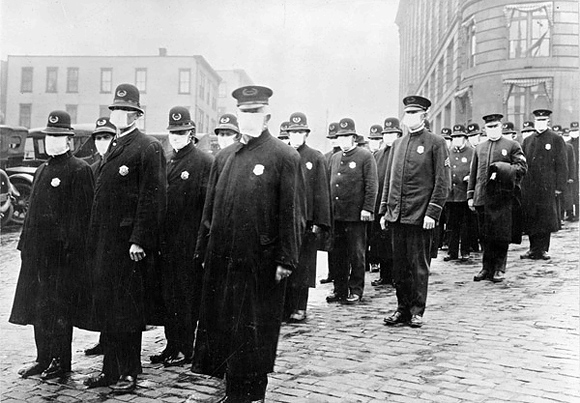
Policemen in Seattle wear masks during the 1918 influenza pandemic.
Officials feared mass hysteria in major cities. Citizens were urged to stay indoors and avoid congested areas. Here, policemen patrol the streets to ensure public safety.
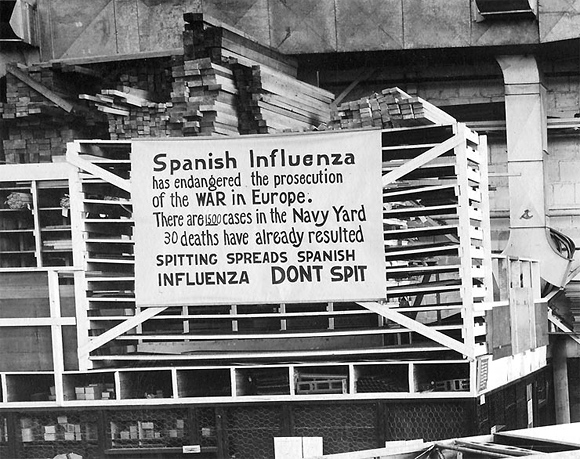
Influenza Precaution Sign.
Mounted on a wood storage crib at the Naval Aircraft Factory, Philadelphia, Pennsylvania, on 19 October 1918. As the sign indicates, the “Spanish Influenza” was then extremely active in Philadelphia, with many victims in the Philadelphia Navy Yard and the Naval Aircraft Factory. Note the sign’s emphasis on the epidemic’s damage to the war effort.
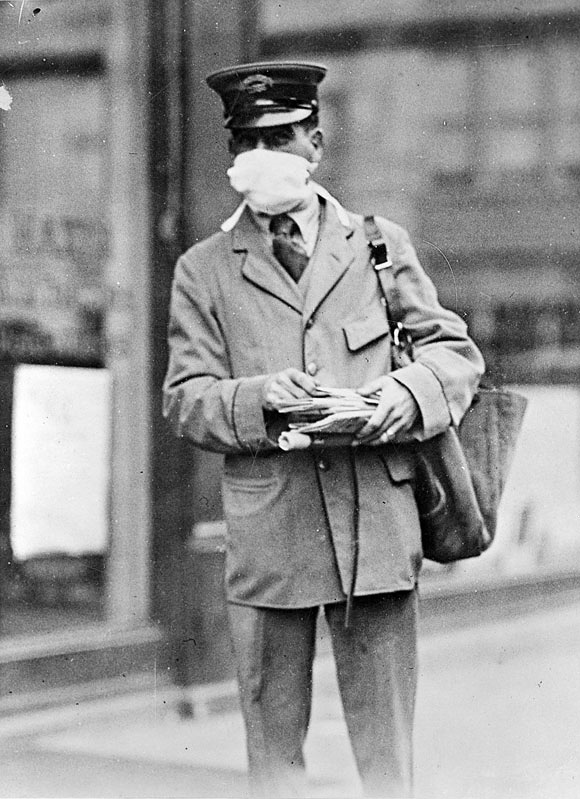
Letter carrier in New York wearing mask for protection against influenza. New York City, October 16, 1918.
Letter carriers, mass transit workers, and others who came in contact with the public, were especially vulnerable to disease. Wearing a face mask helped them avoid contagion.

Nurse wearing a mask as protection against influenza. September 13, 1918.

The Navy Department tried to prevent the spread of the influenza by educating sailors about protecting themselves. In Circular No. 1, the Navy’s Bureau of Sanitation suggests fresh air, adequate sleep, and fluids to stay healthy.

Photo of Indian dwelling and description of conditions at Reno Indian Agency, Nevada. Bureau of Indian Affairs.
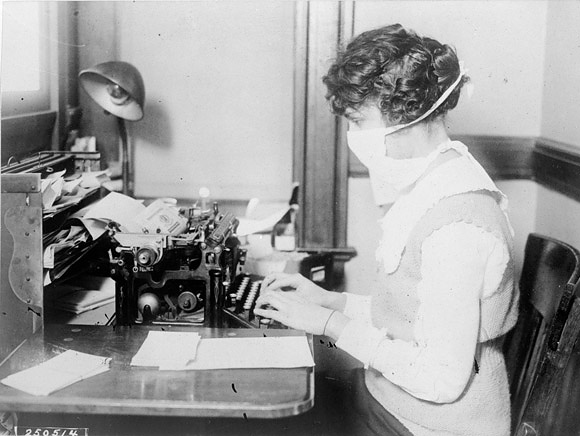
Typist wearing mask, New York City, October 16, 1918.
The flu prevented day-to-day operations from going smoothly. Officials advised all persons to wear face masks, even indoors. Many believed that a person could contract the disease by handling documents and equipment.
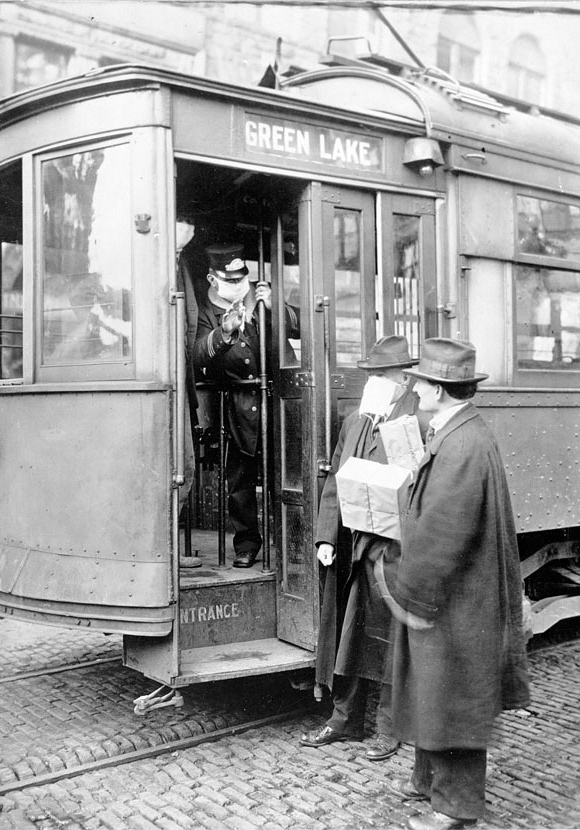
Street car conductor in Seattle not allowing passengers aboard without a mask. 1918.
Mass transit systems, with crowds of people in close quarters, were fertile venues for the spread of disease. In Seattle, public health officials required passengers and employees wear masks as a precautionary measure.
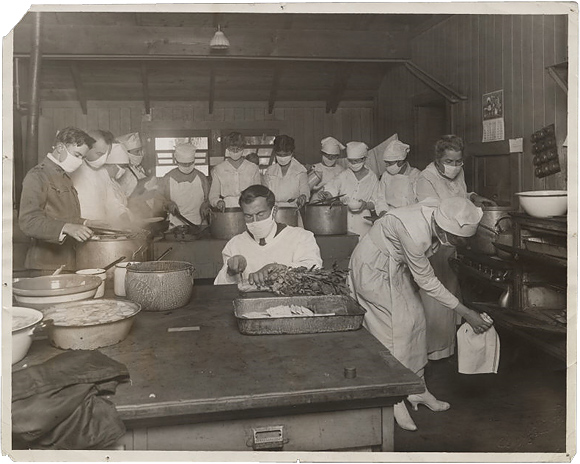
State Normal School Volunteers Preparing Food during the Influenza Epidemic, 1918.
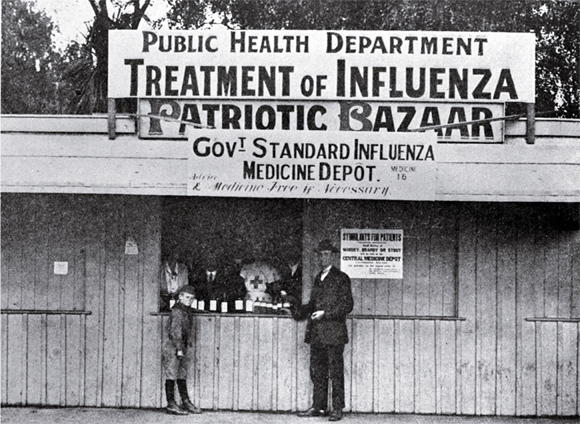
The medicine depot in Cathedral Square where the Government standard influenza medicine was supplied, 1918.
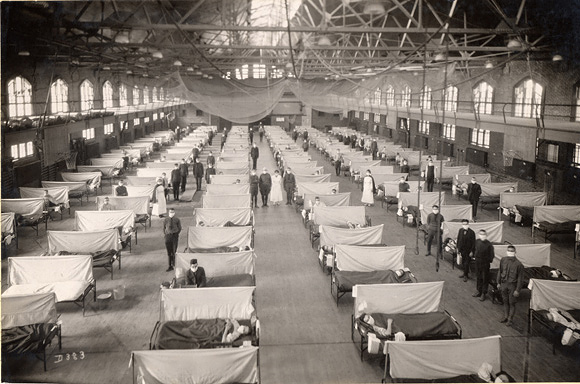
The image was taken in the State Gym during the influenza epidemic of 1918. After the College Hospital exceeded capacity, patients were housed in the State Gym. Fifty-one people at Iowa State died during the epidemic.

Children in the remote Alaskan village of Nushagak survived the 1918–1919 influenza pandemic. However, most of their parents and grandparents succumbed to the 1918 pandemic virus, probably because they had not been exposed to an earlier H1-like influenza virus as a result of their geographic isolation. The photograph was taken in the summer of 1919.

Cheerful boy scouts acting as messengers to distribute food and medicine to patients at their houses during the influenza epidemic, 1918.
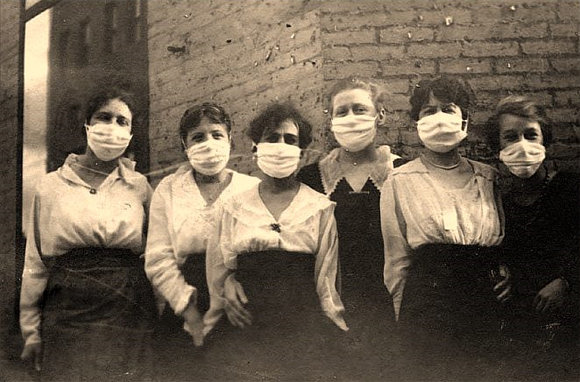
Nurses in 1918 Flu Pandemic.
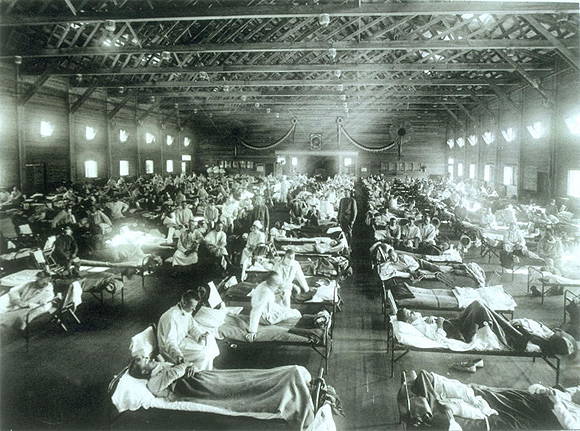
Emergency hospital during influenza epidemic, Camp Funston, Kansas.
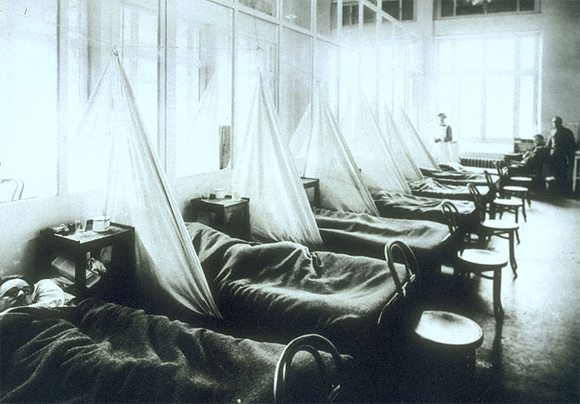
U.S. Army Camp Hospital No. 45, Aix-Les-Bains, France, Influenza Ward No. 1.
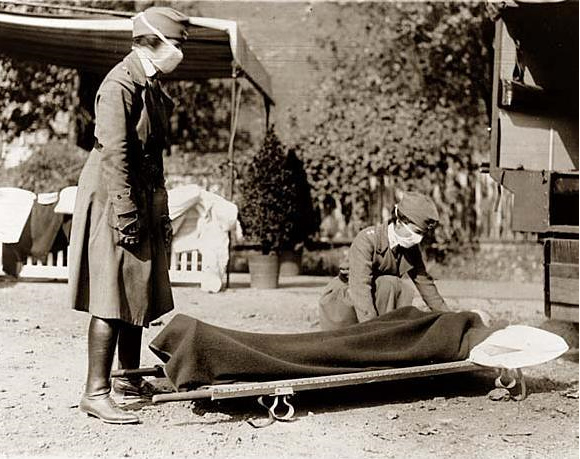
Demonstration at the Red Cross Emergency Ambulance Station in Washington, D.C., during the influenza pandemic of 1918.
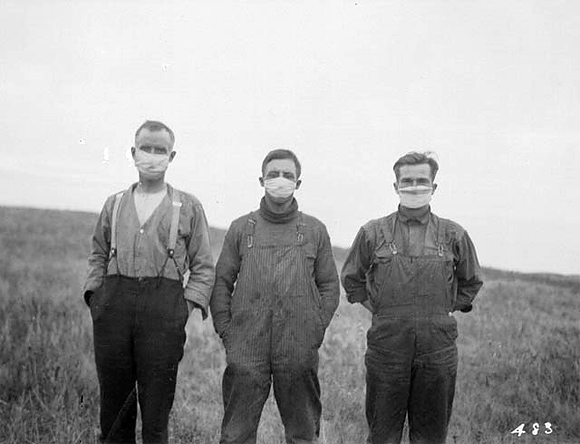
The Spanish flu killed 21 million people worldwide in 1918-1919, including some 50,000 Canadians. It was brought back to Canada by returning troops and made its way into the remotest communities. A number of villages in Quebec and Labrador were almost totally exterminated by the disease.
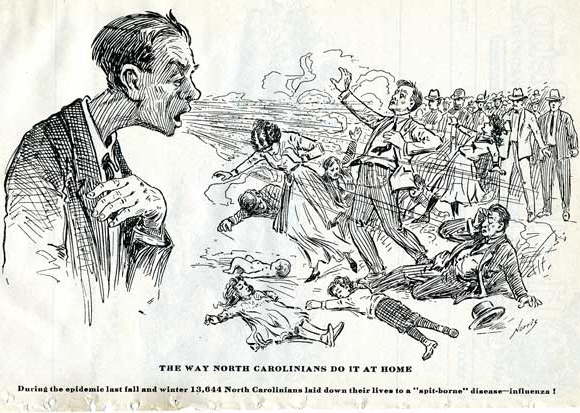
Image from The Health Bulletin. Raleigh, North Carolina State Board of Health. vol. 34:10 (October, 1919).
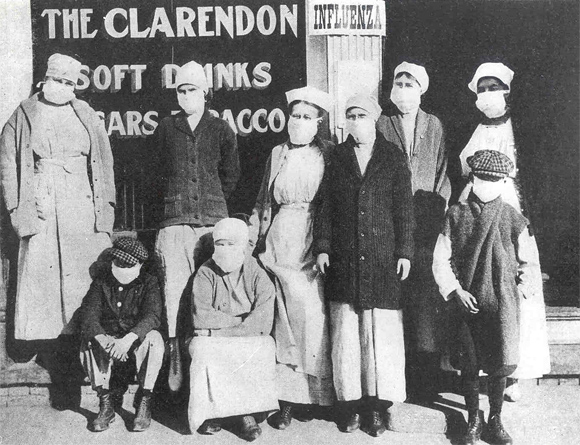
Although people dutifully wore masks, these provided only a very limited protection against the influenza virus.
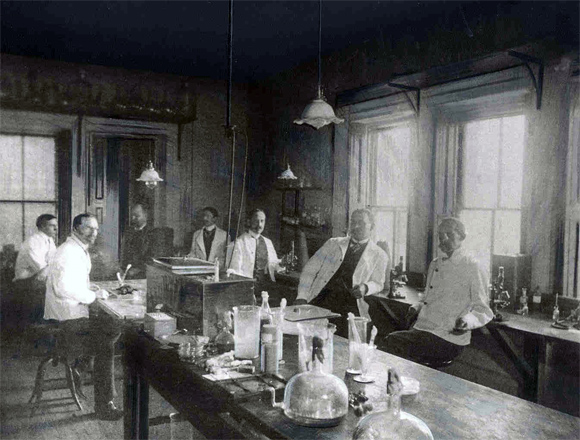
Scientists conducted research in laboratories in the early 1900s.
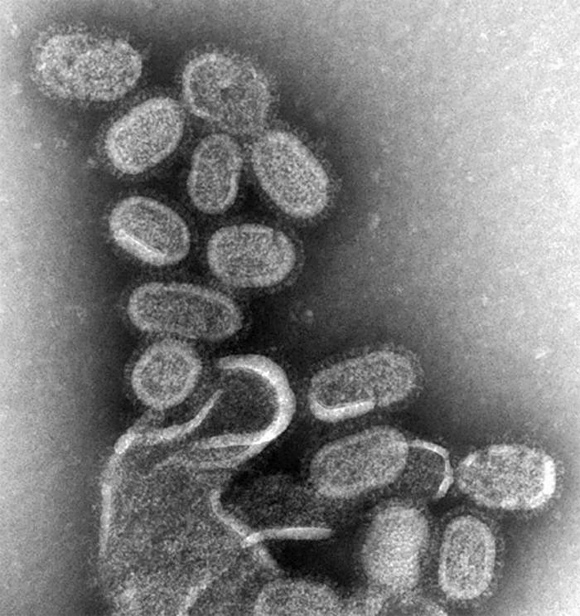
This negative stained transmission electron micrograph showed recreated 1918 influenza virions that were collected from the supernatant of a 1918-infected Madin-Darby Canine Kidney cell culture 18 hours after infection.

